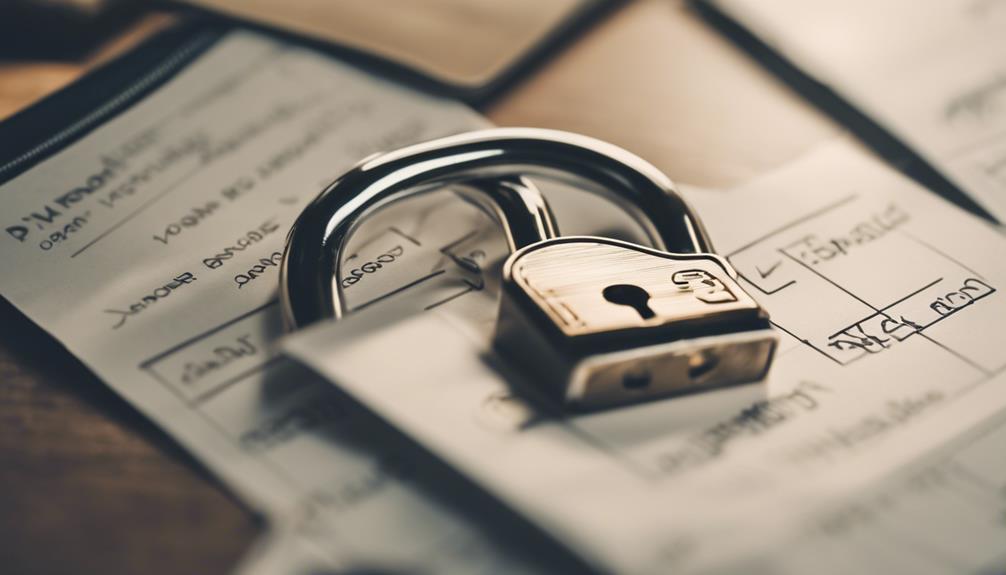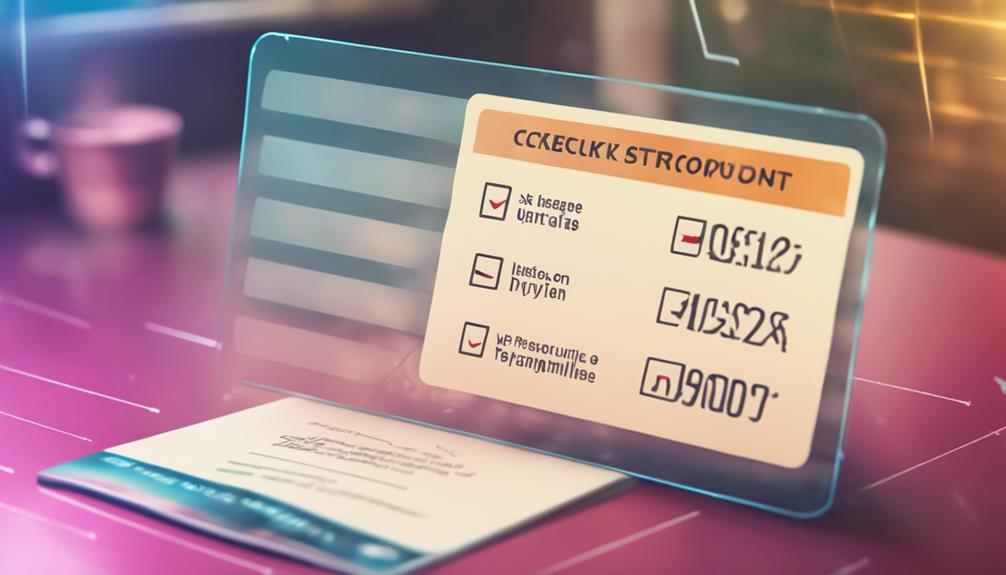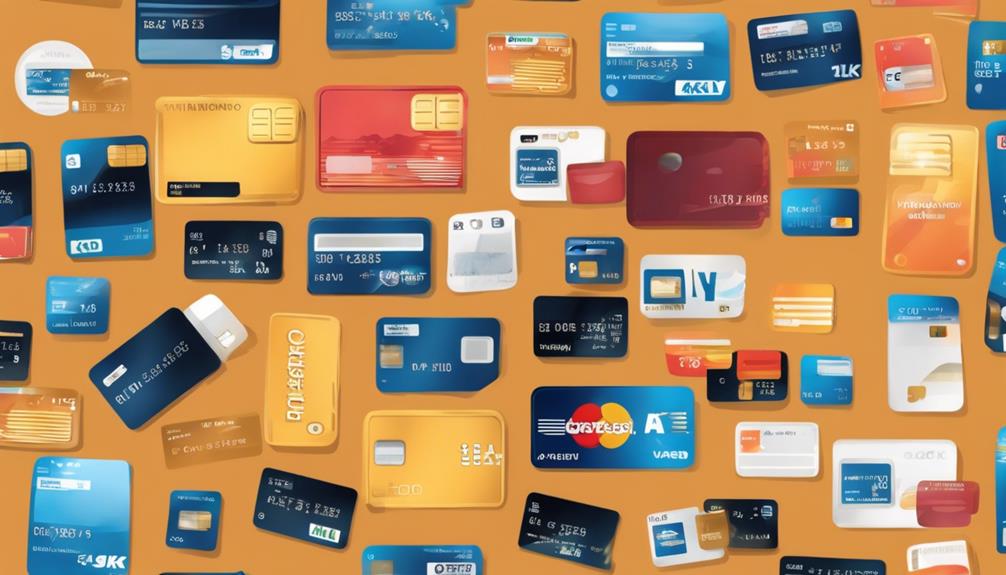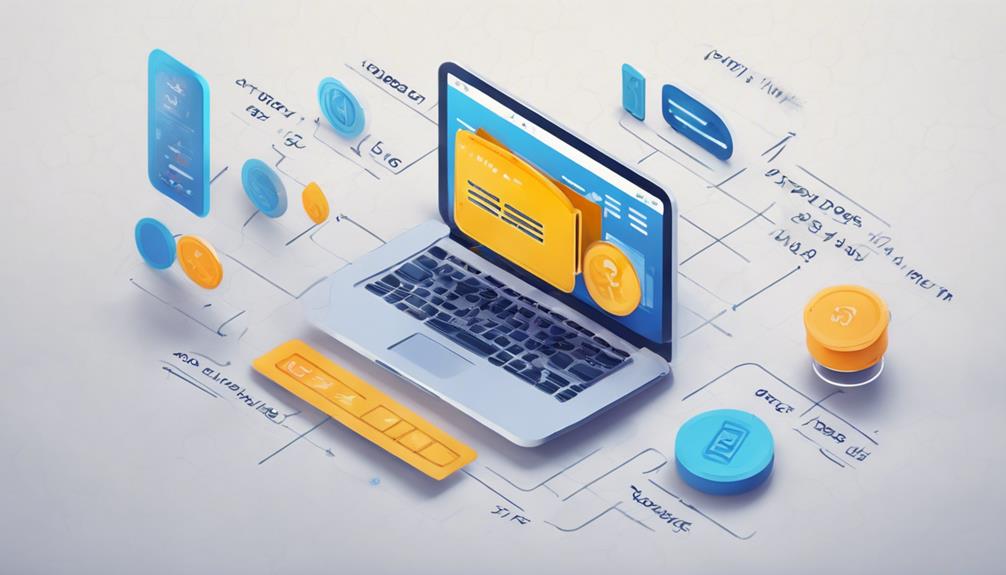Improve your card payment security by following these essential steps: Set up firewalls, use strong passwords, encrypt data, secure transmissions, install antivirus software, update systems, and control access. These measures protect your transactions from cyber threats. By implementing these guidelines, you can fortify your payment processes and enhance overall security.
Key Takeaways
- Implement secure data transmission protocols like TLS and SSL.
- Encrypt cardholder data during network transfers for confidentiality.
- Regularly update encryption protocols for enhanced security.
- Safeguard sensitive cardholder information with robust encryption.
- Add extra security layer to the card payment process for protection.
Network Security Measures

When setting up your network security measures, make sure to configure firewalls to protect cardholder data effectively. Firewalls act as the first line of defense against unauthorized access and cyber threats.
By configuring firewalls to block untrusted networks and regularly reviewing and updating them, you enhance the security of sensitive payment information. Routers should also be configured for maximum protection to create a robust network security framework.
These measures help prevent data breaches and unauthorized access to cardholder data, ensuring that your customers' information remains secure. Remember, implementing strong firewall configurations is essential in safeguarding against potential cyber attacks and maintaining the integrity of your payment processing systems.
Password Protection Guidelines

To enhance the security of your network, it's essential to implement robust password protection guidelines that safeguard sensitive data and prevent unauthorized access.
Avoid using default passwords and make sure that security settings are regularly updated to create unique passwords with a minimum of 7 characters.
It's important to add additional security measures to strengthen your defenses against potential breaches. Remember to update your passwords every 90 days to maintain a high level of protection.
Data Encryption Best Practices

Implement strong data encryption practices to safeguard sensitive cardholder information and guarantee secure transmission and storage of data. When it comes to data encryption best practices, consider the following:
- Utilize robust encryption algorithms to protect data from unauthorized access
- Implement encryption key management to securely store and manage encryption keys
- Regularly update encryption protocols to stay ahead of evolving security threats
Secure Data Transmission Protocols

Utilize secure data transmission protocols to safeguard sensitive payment information during network transfers.
Encrypting cardholder data transmitted over public networks is important to prevent unauthorized access. By applying security protocols like TLS and SSL, you can guarantee that transmitted data remains unreadable to malicious actors.
This layer of protection is vital in maintaining the confidentiality of sensitive payment details. Whether you're operating on open or closed networks, implementing these protocols adds an extra layer of security to your card payment process.
Antivirus Software Recommendations

Enhancing your system security with regularly updated antivirus software is crucial for protecting against malware attacks. To guarantee robust protection, consider the following recommendations:
- Choose reputable antivirus software from well-known providers.
- Enable automatic updates to stay protected against the latest threats.
- Perform regular system scans to detect and remove any malicious software.
System and App Security Tips

To enhance the security of your systems and applications, prioritize deploying and maintaining secure configurations. Make sure that all systems and applications are up to date with the latest security patches and updates.
Regularly scan for security vulnerabilities and address any issues promptly. Implement strong authentication methods, such as multi-factor authentication, to protect against unauthorized access.
Encrypt sensitive data both at rest and in transit to prevent data breaches. Monitor system and application activity for any suspicious behavior and promptly investigate any anomalies.
Access Control Strategies

Implement access control strategies to restrict unauthorized access to cardholder data and enhance overall security measures.
- Utilize role-based access: Assign specific access levels based on job roles and responsibilities to limit data exposure.
- Implement multi-factor authentication (MFA): Require more than just passwords for accessing sensitive information, adding an extra layer of security.
- Regularly audit access logs: Monitor and review who accesses cardholder data, when, and for what purpose to detect any suspicious activities promptly.
Frequently Asked Questions
How Can I Ensure My Firewall Settings Are Optimized for Maximum Protection?
To guarantee your firewall settings are optimized for maximum protection, start by setting up firewalls to safeguard cardholder data. Configure them to block untrusted networks and review/update them quarterly.
Focus on routers configuration for excellent protection. Remember, firewalls act as the first line of defense against threats.
What Are the Best Practices for Securely Storing and Transmitting Sensitive Cardholder Data?
When securely storing and transmitting sensitive cardholder data, prioritize encryption for protection. Implement firewalls, update passwords regularly, and use secure data transmission methods like TLS or SSL.
Limit access to only necessary personnel, monitor and track network access, and conduct routine security tests. Enforce strong information security policies, manage physical access, and deploy antivirus protection.
How Often Should I Conduct Security Tests and Vulnerability Scans on My Systems?
Conduct security tests and vulnerability scans on your systems quarterly to guarantee ongoing protection. Regular testing helps identify and address potential weaknesses in your security setup.
By enlisting an Approved Scanning Vendor (ASV) and completing annual penetration tests, you can enhance your system's resilience against cyber threats.
Implementing weekly comparisons of critical access files can also help monitor any unauthorized activities.
Stay proactive in safeguarding your data with routine security assessments.
What Measures Can I Take to Effectively Restrict Physical Access to Cardholder Data?
To effectively restrict physical access to cardholder data, limit access based on need-to-know, implement access control systems, require ID badges for entry, minimize personnel handling sensitive information, and back up data off-site.
Enforce strict access policies, conduct thorough employee training, and monitor and track all physical access to cardholder data.
How Do I Enforce and Regularly Update an Information Security Policy Within My Organization?
To enforce and regularly update an information security policy within your organization, start by creating a detailed policy outlining protocols and procedures. Assign responsibilities, set technology requirements, and conduct risk assessments.
Distribute the policy to employees, management, and third-party vendors. Regularly review and update the policy to guarantee it aligns with industry standards and organizational needs.
Train employees on the policy to secure compliance and understanding.
Conclusion
To sum up, incorporating the security measures outlined in the checklist is crucial to safeguard your card payment information from potential threats.
By strengthening your defenses with network security, password protection, data encryption, secure transmission protocols, antivirus software, system and app security, and access control strategies, you can greatly reduce the risk of cyber attacks.
Stay vigilant and adhere to these guidelines to protect your valuable data effectively.










